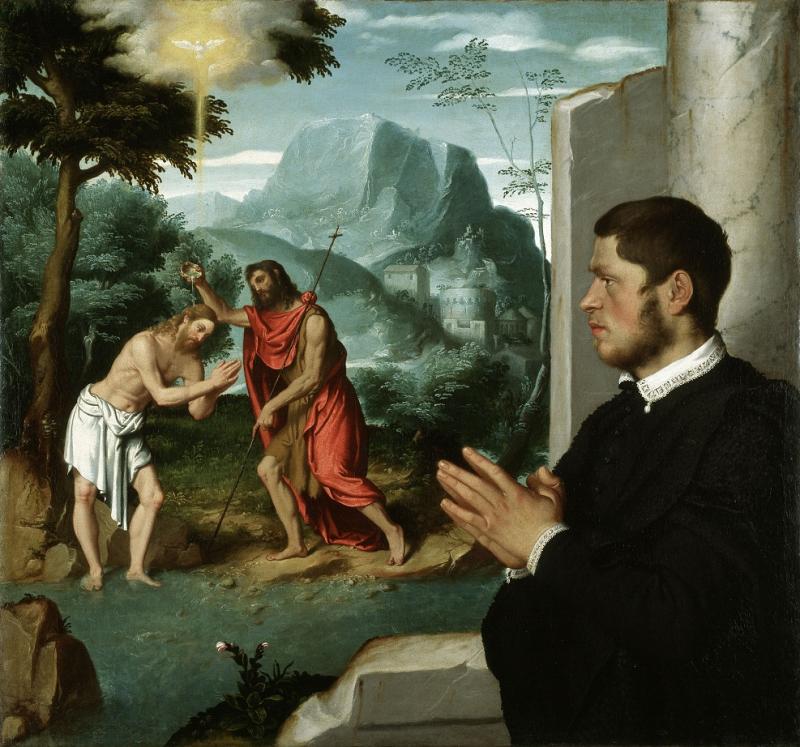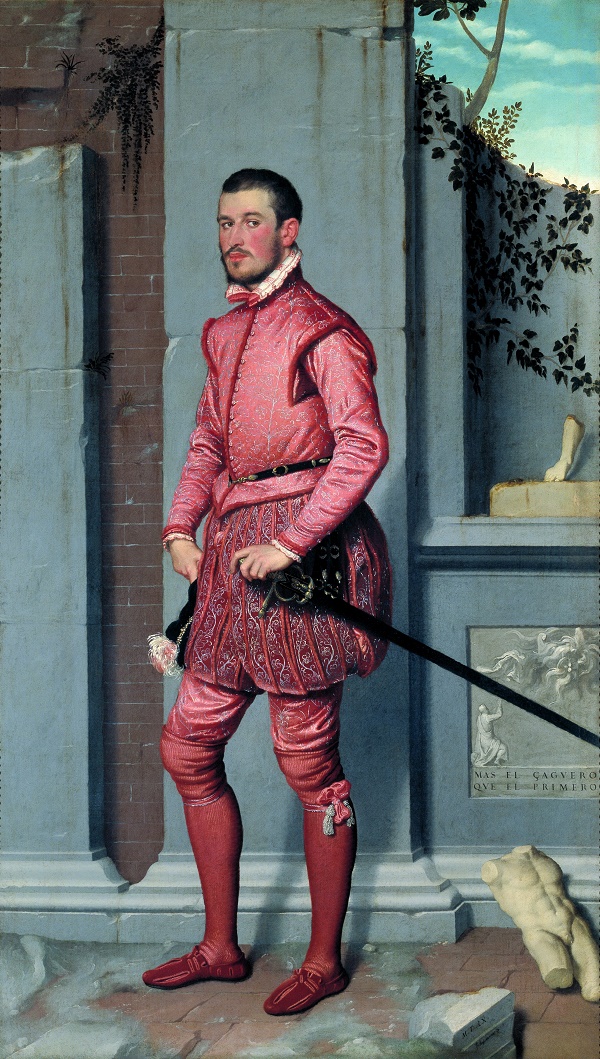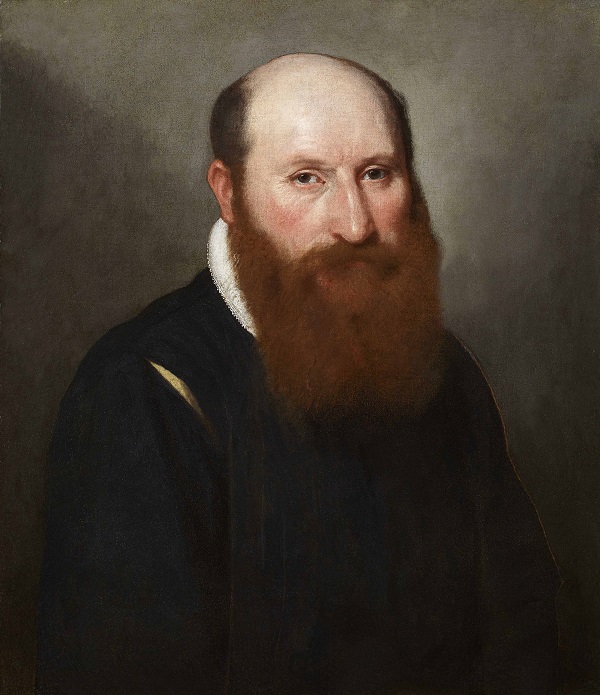Giovanni Battista Moroni, Royal Academy | reviews, news & interviews
Giovanni Battista Moroni, Royal Academy
Giovanni Battista Moroni, Royal Academy
Renaissance Italy's forgotten master of the fleeting moment

Written in the 16th century, Giorgio Vasari’s Lives of the Artists continues to underpin our understanding of the Renaissance, and its author is blamed, often with some justification, for a multitude of art historical anomalies. But there can be little doubt that Vasari’s omission of Giovanni Battista Moroni, a fine painter of portraits and religious subjects, has been instrumental in the disappearance of this artist from the Renaissance halls of fame.
Celebrated in his own lifetime, Moroni’s reputation dwindled after his death but revived in the 19th century, when his work was collected avidly in this country, with the National Gallery housing the biggest collection of his work outside Italy.
Vasari neglected Moroni for the devastatingly banal reason that he never visited Bergamo in the northern Italian region of Lombardy, where Moroni spent much of his life. In fact, aside from an extended stay in Trent, Moroni never ventured beyond Lombardy. As a consequence, his work forms a self-contained whole, offering a coherent if not comprehensive picture of Bergamo’s high society at a particularly colourful moment in time.
 A room devoted to full length, aristocratic portraits has been superbly hung, with protagonists from both sides of a bitter feud between two of Bergamo’s ruling families, the Albanis and Brembatis, squaring up to each other across a space that bristles with tension. There seems to be some doubt as to how much Moroni was influenced by his contemporary, Titian, but surely in its naturalistic capture of a fleeting moment, Moroni’s Portrait of Giovanni Gerolamo Grumelli, 1560 (pictured left), is as strong an indication as any that Moroni had seen the work of the Venetian.
A room devoted to full length, aristocratic portraits has been superbly hung, with protagonists from both sides of a bitter feud between two of Bergamo’s ruling families, the Albanis and Brembatis, squaring up to each other across a space that bristles with tension. There seems to be some doubt as to how much Moroni was influenced by his contemporary, Titian, but surely in its naturalistic capture of a fleeting moment, Moroni’s Portrait of Giovanni Gerolamo Grumelli, 1560 (pictured left), is as strong an indication as any that Moroni had seen the work of the Venetian.
A member of the Brembati clan, Grumelli is all testosterone and dirty swagger. He avoids our gaze, but there is nothing bashful about him; with his hand on his sword and his face flushed pink, Grumelli looks like a tomcat disturbed while he patrols his territory – momentarily stock still, he waits, ready to pounce. Directly opposite, and in a similarly provocative pose, is the elegant Portrait of Faustino Avogadro, c.1555-60, who, married to an Albani, was no friend of Grumelli’s. Pieces of armour are strewn carelessly about him, and he leans on one arm with an air of affected disdain.
Moroni’s ability to convey personality with what, instinctively, you feel must be honesty, while honouring the idiom of state portraiture, is superbly demonstrated in this room. The hang exaggerates the aggrandising purpose of these paintings, which, mirroring each other in composition, vie with one another in paint and canvas as much as they most certainly did in life.
When the feud escalated, with a member of the Brembati clan murdered in a Bergamo church, the swingeing curbs imposed upon the local aristocracy ultimately served to benefit Moroni’s painting. Moving back to his hometown of Albino, Moroni applied his naturalistic approach to more modest head and shoulder portraits of ordinary people. In a series of portraits made in the late 1550s, monochrome backgrounds and dark, minimally rendered clothes emphasise the startling naturalism of these characterful faces, as in Portrait of a Man with a Red Beard, c.1558-59 (Pictured below).
 Moroni’s naturalism often leads him to be compared with his fellow Lombard, Caravaggio, who shocked audiences with his refusal to flatter and idealise. Moroni predated Caravaggio by a good generation or two, but his sympathetic, but surely uncomfortably honest approach to portraiture was popular nevertheless, and commissioned by an increasingly genteel clientele. His later portraits are less austere than these small heads, but he retains in them a wonderful immediacy, his trademark the sense that the subject, disturbed while absorbed in an activity, has just that moment looked up, or turned to face us.
Moroni’s naturalism often leads him to be compared with his fellow Lombard, Caravaggio, who shocked audiences with his refusal to flatter and idealise. Moroni predated Caravaggio by a good generation or two, but his sympathetic, but surely uncomfortably honest approach to portraiture was popular nevertheless, and commissioned by an increasingly genteel clientele. His later portraits are less austere than these small heads, but he retains in them a wonderful immediacy, his trademark the sense that the subject, disturbed while absorbed in an activity, has just that moment looked up, or turned to face us.
Moroni’s later portraits hark back to the large format of his Bergamo days, while retaining the intense focus on the face that really developed in his smaller pictures. By this stage, it seems that he was operating almost like a modern portrait photographer, with sitters coming to his studio and being presented with the same props, and sitting in the same chair.
While it is the portraiture that will have you transfixed, Moroni’s religious works underscore the curious way that, despite his provincial existence, Moroni was himself far from provincial. His altarpieces and devotional images, like much of his portraiture, reflect his engagement with contemporary events, not least the momentous changes occurring within the Catholic church (see main picture).
Moroni’s only trip beyond his home region of Lombardy was during the Council of Trent, when the Catholic Church thrashed out its response to the Protestant Reformation. His altarpieces and devotional works, many of which are here, are imbued with the spirit of the Counter-Reformation, underlining fundamental Catholic tenets that were challenged by Protestant thinkers, but embracing a toning down of religious imagery, with a renewed focus on individual piety.
Share this article
Add comment
The future of Arts Journalism
You can stop theartsdesk.com closing!
We urgently need financing to survive. Our fundraising drive has thus far raised £49,000 but we need to reach £100,000 or we will be forced to close. Please contribute here: https://gofund.me/c3f6033d
And if you can forward this information to anyone who might assist, we’d be grateful.

Subscribe to theartsdesk.com
Thank you for continuing to read our work on theartsdesk.com. For unlimited access to every article in its entirety, including our archive of more than 15,000 pieces, we're asking for £5 per month or £40 per year. We feel it's a very good deal, and hope you do too.
To take a subscription now simply click here.
And if you're looking for that extra gift for a friend or family member, why not treat them to a theartsdesk.com gift subscription?
more Visual arts
 'We are bowled over!' Thank you for your messages of love and support
Much-appreciated words of commendation from readers and the cultural community
'We are bowled over!' Thank you for your messages of love and support
Much-appreciated words of commendation from readers and the cultural community
 Folkestone Triennial 2025 - landscape, seascape, art lovers' escape
Locally rooted festival brings home many but not all global concerns
Folkestone Triennial 2025 - landscape, seascape, art lovers' escape
Locally rooted festival brings home many but not all global concerns
 Sir Brian Clarke (1953-2025) - a personal tribute
Remembering an artist with a gift for the transcendent
Sir Brian Clarke (1953-2025) - a personal tribute
Remembering an artist with a gift for the transcendent
 Emily Kam Kngwarray, Tate Modern review - glimpses of another world
Pictures that are an affirmation of belonging
Emily Kam Kngwarray, Tate Modern review - glimpses of another world
Pictures that are an affirmation of belonging
 Kiefer / Van Gogh, Royal Academy review - a pairing of opposites
Small scale intensity meets large scale melodrama
Kiefer / Van Gogh, Royal Academy review - a pairing of opposites
Small scale intensity meets large scale melodrama
 Jenny Saville: The Anatomy of Painting, National Portrait Gallery review - a protégé losing her way
A brilliant painter in search of a worthwhile subject
Jenny Saville: The Anatomy of Painting, National Portrait Gallery review - a protégé losing her way
A brilliant painter in search of a worthwhile subject
 Abstract Erotic, Courtauld Gallery review - sculpture that is sensuous, funny and subversive
Testing the boundaries of good taste, and winning
Abstract Erotic, Courtauld Gallery review - sculpture that is sensuous, funny and subversive
Testing the boundaries of good taste, and winning
 Edward Burra, Tate Britain review - watercolour made mainstream
Social satire with a nasty bite
Edward Burra, Tate Britain review - watercolour made mainstream
Social satire with a nasty bite
 Ithell Colquhoun, Tate Britain review - revelations of a weird and wonderful world
Emanations from the unconscious
Ithell Colquhoun, Tate Britain review - revelations of a weird and wonderful world
Emanations from the unconscious
 Rachel Jones: Gated Canyons, Dulwich Picture Gallery review - teeth with a real bite
Mouths have never looked so good
Rachel Jones: Gated Canyons, Dulwich Picture Gallery review - teeth with a real bite
Mouths have never looked so good
 Yoshitomo Nara, Hayward Gallery review - sickeningly cute kids
How to make millions out of kitsch
Yoshitomo Nara, Hayward Gallery review - sickeningly cute kids
How to make millions out of kitsch
 Hamad Butt: Apprehensions, Whitechapel Gallery review - cool, calm and potentially lethal
The YBA who didn’t have time to become a household name
Hamad Butt: Apprehensions, Whitechapel Gallery review - cool, calm and potentially lethal
The YBA who didn’t have time to become a household name

Comments
lovely writing on art!!!